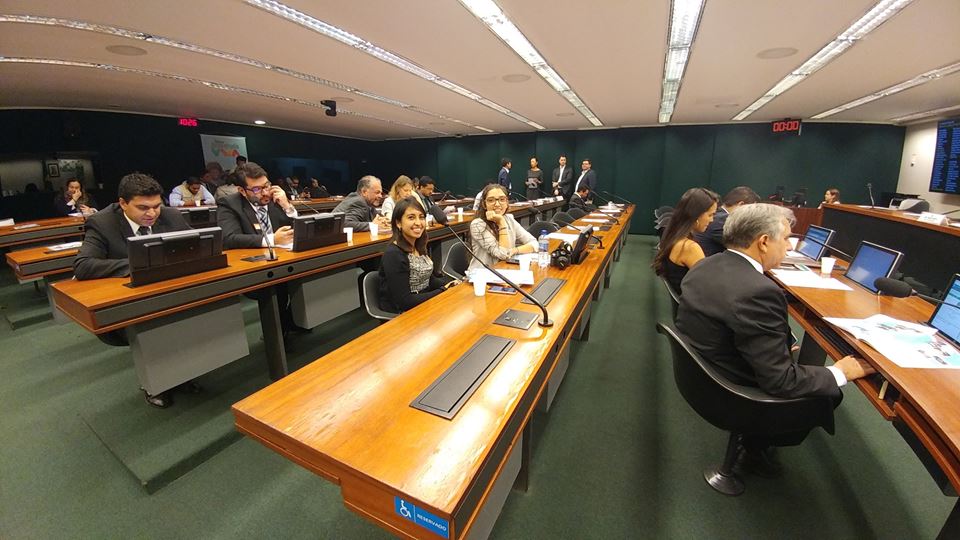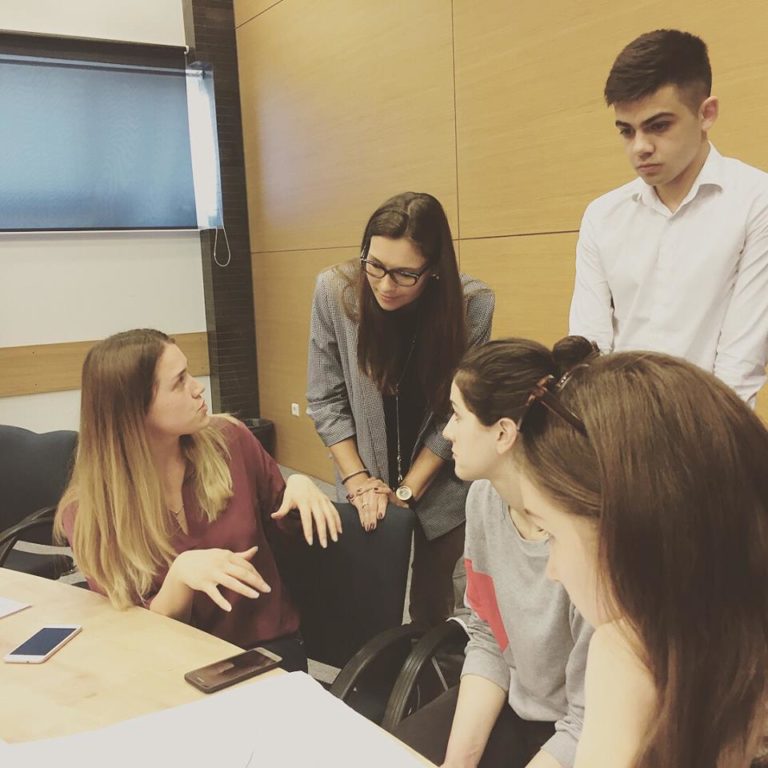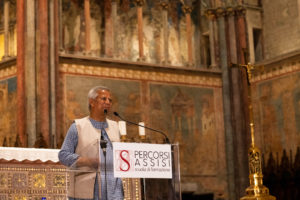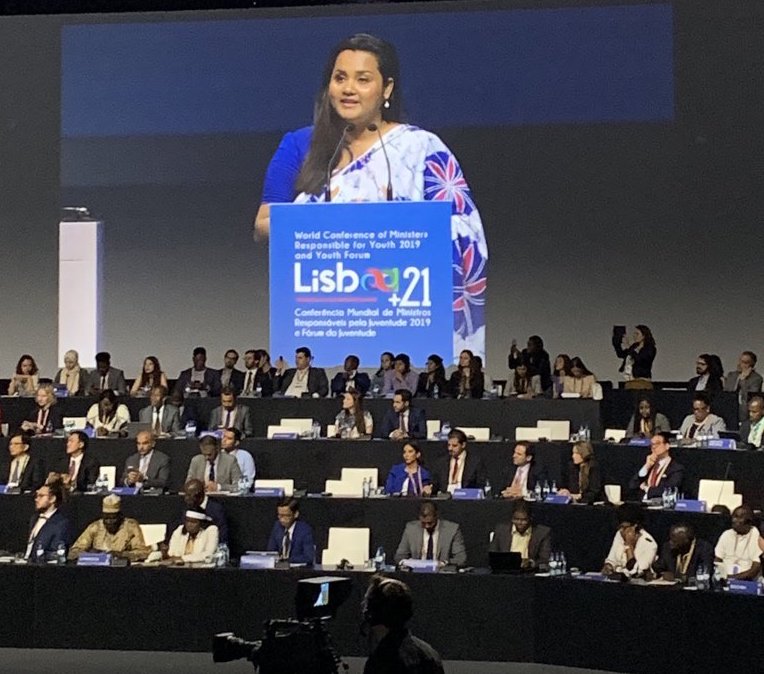The Youth, Peace and Security (YPS) space grew significantly over the past decade thanks to efforts from every corner of the globe and a series of collective actions, both big and small, from diverse groups and individuals. Critical to this expansion was the creation of space by large institutions, government bodies, academic research, and the use of alternate space by individuals and organizations on local and regional levels. Youth leaders for peace are capitalizing on this opportunity by pushing for more support and openings for youth participation in peace processes, projects, and formal decision-making. The international community and local leaders are growing to recognize the important role young people play in society and in peacebuilding.
Unfortunately, it took the threat of youth recruitment into rebel groups and terrorist organizations for national governments and international institutions to acknowledge the important role of youth and begin giving them due attention. However, since young people have proved themselves capable contributors and meaningful actors in diverse settings, the role of youth has expanded. Young people demand recognition as peacemakers, the right to participate, and a legitimate voice. Today, stereotypes and systematic exclusion still block young people from participating in their full capacity (and in some cases at all), but generally speaking, youth have gained momentum and are tapping into sources of power to increase their impact. Arguably, institutions’ formal acknowledgment of youth made this possible.

People pushed from all sides of the equation to empower youth. The Youth 2030 agenda and two United Nations Security Council Resolutions (UNSCR) relating to Youth, Peace and Security (UNSCR 2250 and 2419) are marks of progress. Organizations like the United Network of Young Peacebuilders, Search for Common Ground, the inter-agency UN working group on youth participation in peacebuilding, and the Organization for Security and Co-operation in Europe facilitated entry points for young people, youth-led initiatives, and youth organizations to advocate for youth, young peacebuilders, and the YPS agenda.
This successful collaboration between youth and elders, formal and informal groups, governments and civil society, illustrates the importance of each stakeholder. While the international resolutions and recommendations set a roadmap, the ability to recognize local youth leaders as important peace stakeholders can lead to long-term sustainable peace. The UN’s legitimization of the youth movement, significantly increases the possibilities for realizing common goals and effective teamwork.
One recent example of “meeting in the middle” occurred on International Youth Day (Aug 12, 2019), when the United Nations Special Envoy for Youth joined the YMCA and the Scouts to kick off youth-led initiatives aimed at local impact for peace. This is an example of a middle ground in the sense of international and local as well as institutions and individuals. Both through intentional coordination and coincidental acts, people working from the top-down and bottom-up have met in the middle to collaborate for peace.
[T]he youth-led project has organized National Youth Assemblies where young academics, politicians, and mixed civil society members meet and produce outcomes that the government, private sector, and regional/international organizations consult.
Another “middle-encounter” strategy that must continue is open spaces that allow youth to not only have a voice but to become stakeholders who impact decision-making. For instance, the United Nations Mission in Kosovo, the first to add the YPS component to its national strategy, released the Youth Task Force in 2016. Since then, the youth-led project has organized National Youth Assemblies where young academics, politicians, and mixed civil society members meet and produce outcomes that the government, private sector, and regional/international organizations consult. In Kosovo, these efforts represent significant milestones when it comes to YPS advocacy, policy-making, and strategies for successful implementation.

Despite the Kosovo example, achieving these goals is often easier said than done. One of the core problems with linking top-down and bottom-up approaches is that it can take time to implement UN resolutions and strategies at national government levels. The momentum pushing UN resolutions forward grows from the bottom up and the top levels of government at the UN endorse it. But when it comes to implementation, this momentum slows and is often blocked by systematic issues of procedure on international and national levels.
Another obstacle to opening pathways between top and bottom level leaders is financial management for implementing components of YPS. To date, only 10% of the youth-led peace organizations around the globe have a 100,000 USD annual budget and the majority operates with less than 5,000 USD annually. In fact, 97% of youth-led or youth-focused organization staff members work on a volunteer basis – they are not receiving any kind of income. As with many non-profit organizations, funding is complicated and competition for funds and a lack of mechanisms for fundraising and budgeting is a challenge. The aforementioned lack of trust in youth further complicates access to funding sources from public and private donors as well.
Editor’s Picks — Related Articles:

“How youth can reshape our unequal world. An interview with Nobel laureate Muhammad Yunus”

“Investing in the future: youth-led research and its role in combating climate change”
Despite the complications of building channels among those involved, efforts from all sides have put the topic of youth and peace on the mainstream agenda. We must acknowledged that negative narratives of youth as troublemakers or violent extremists does not correspond to the whole age cohort; many young people are active agents for positive social change and leaders of peacebuilding in their contexts and globally. The vast majority of our global youth population are likely to intervene in prevention, humanitarian action, human rights, peace, and security. They respond transformatively to violent extremism, conflict, organized violence, and gender abuse. Young people are keen to collaborate with different government structures, local leaders, media, elders, and justice entities to coordinate in conflict transformation and peacebuilding. With this in mind, we look forward to a future in which these entities are just as keen to collaborate with youth to achieve an inclusive future of local and global peace.











